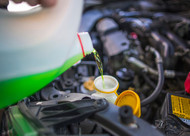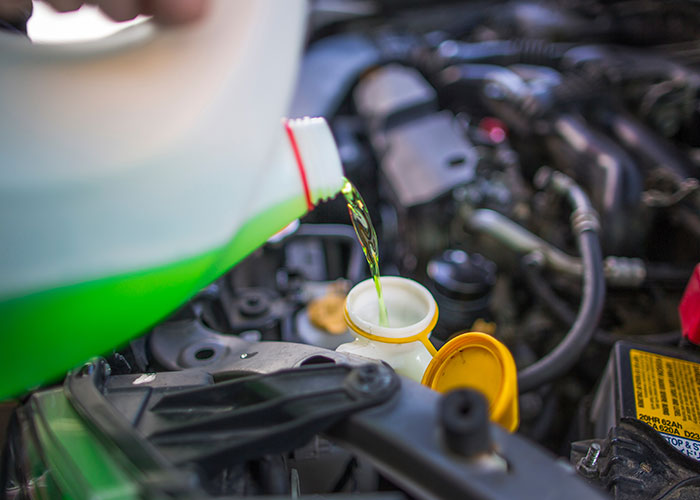How Often To Change Engine Coolant?
12th May 2024
Over time, engine coolant can deteriorate and lose its effectiveness, which may lead to potential engine damage. Understanding the right intervals for changing your engine coolant is essential for maintaining your vehicle's efficiency and smooth operation.
In this article, we'll explore the recommended intervals for changing engine coolant, the signs that indicate it's time for a change, and some tips on how to perform this maintenance task properly.
Let’s get started!
Importance of The Engine Coolant In Your Car
Engine coolant, also known as antifreeze, plays a critical role in your car’s engine performance and longevity. Below is a more detailed examination of the crucial functions of engine coolant and why it is vital to keep it well-maintained:
1. Regulates Temperature
The primary function of engine coolant is to absorb excess heat from the engine and dissipate it efficiently through the radiator, preventing the engine from overheating in warm conditions or freezing in cold ones. Proper temperature regulation is crucial, ensuring the engine operates within its optimal range, thus maintaining efficiency and preventing thermal damage.
2. Prevents Corrosion
Engine coolant contains additives that prevent corrosion and rust in the engine's cooling system, forming a protective barrier that reduces wear and enhances engine longevity. These additives help maintain the internal system’s integrity, ensuring optimal performance. Regular coolant replacement is crucial to preserve these protective properties over time.
3. Enhances Heat Transfer
Unlike water, coolant is designed to have superior heat transfer capabilities. This characteristic is crucial for the effective cooling of the engine, particularly under high load or high temperature conditions. Enhanced heat transfer helps in maintaining engine performance and can contribute to improved fuel efficiency.
4. Prevents Scale Buildup
Water alone can lead to the formation of scale and mineral deposits within the engine and cooling system, which can impede heat transfer and reduce the system’s efficiency. Coolant contains specific additives that help prevent these deposits from forming, ensuring the cooling system remains clean and effective.
5. Boiling and Freezing Protection
Coolant adjusts the physical properties of the liquid in the cooling system, lowering its freezing point and raising its boiling point. This prevents the coolant from freezing in cold weather or boiling over in extreme heat, thus avoiding engine damage or failure.
6. Lubrication
Many people overlook that coolant also helps lubricate the water pump and other moving components within the engine cooling system. This lubrication is essential for the longevity and efficient operation of these components.
How Often To Change Engine Coolant?
Knowing when to replace your engine coolant is crucial for optimal vehicle performance and preventing costly engine damage. Here are three key signs that indicate it's time to replace your coolant:
3 Signs You Need to Change Engine Coolant
- Mileage and Time Guidelines: It's recommended to change engine coolant every 30,000 to 60,000 miles or every 3 to 5 years, depending on your vehicle’s use and manufacturer guidelines.
- Visual Inspection: Check for discoloration or debris. Coolant that looks rusty or has particles floating in it needs to be changed.
- Performance Issues: If your engine runs hotter than usual, this could indicate that the coolant is no longer effective and needs replacing..
What You'll Need
- New Engine Coolant: Make sure it’s the correct type for your vehicle.
- Coolant Tester (optional, to check the effectiveness of existing coolant).
- Distilled Water (if your coolant needs to be diluted).
- Gloves and Safety Glasses for protection.
- Rags for cleanup.
- Drain Pan.
- Funnel.
Steps to Change Engine Coolant
Step 1: Prepare Your Vehicle
Before you start, make sure your vehicle is parked on a flat surface and the engine has cooled down. Open the hood and locate both the radiator and the coolant reservoir. This initial preparation ensures safety and ease of access during the coolant change process.
Step 2: Drain Old Coolant
Place a drain pan under the radiator’s drain plug to catch the old coolant. Remove the radiator cap to allow air into the system, facilitating smoother coolant flow. Open the drain plug while wearing gloves, as coolant is toxic and can be harmful to your skin. Let all the coolant drain out into the pan, then securely close the plug.
Step 3: Flush the System (if needed)
To remove any residual old coolant and contaminants, fill the radiator with distilled water. Start the engine and run it with the heater set to maximum for about 10 minutes. Afterward, turn off the engine, allow it to cool, then drain the water out. Repeat this flushing process if the drained water is not clear.
Step 4: Refill with New Coolant
Prepare your new coolant mixture according to the manufacturer’s specifications, particularly if dilution with water is required. Using a funnel, slowly pour the new coolant into the radiator until it reaches the “full” line, being careful not to overfill. Replace the radiator cap once you have filled the coolant to the appropriate level.
Step 5: Check and Add to the Coolant Reservoir
Examine the coolant reservoir and top it up with the same mixture of new coolant if necessary, up to the indicated “cold fill” line. This step ensures that the entire cooling system has adequate coolant.
Step 6: Bleed the System
With the radiator cap off, start the engine and let it run for about 15 minutes with the heater on its highest setting. This process helps to remove any air pockets that may have formed in the cooling system. Monitor the coolant level in the radiator as the engine warms up and add more coolant if the level decreases.
Step 7: Check for Leaks and Test Drive
While the engine is running, inspect the radiator and connected hoses for any leaks. Take your vehicle for a short drive to ensure everything is functioning correctly. After the drive, check the temperature gauge and coolant level again, making any necessary adjustments.
Step 8: Safety and Disposal
Remember, coolant is toxic, so always wear gloves and safety glasses when handling it. Dispose of used coolant properly; do not pour it down the drain. Check local regulations or consult with automotive stores for appropriate disposal facilities.
FAQs
1. Is Engine Coolant Flammable?
Engine coolant is typically not flammable as it is primarily composed of water and ethylene glycol or propylene glycol. However, under extreme conditions, the glycol component can decompose and become combustible.
2. Can Engine Coolant Evaporate?
Engine coolant can evaporate slightly over time, especially if the cooling system is not sealed properly or if there are leaks. Regular checks and top-ups are important to maintain the correct coolant level.
3. Are Engine Coolant and Antifreeze The Same Thing?
Yes, engine coolant and antifreeze are the same thing. The term "antifreeze" is often used because one of the coolant's primary functions is to prevent the engine's water-based liquids from freezing.
4. Where Does Engine Coolant Go?
Engine coolant circulates through the engine's cooling system, passing through the radiator, engine block, and hoses to regulate the engine’s temperature and prevent overheating.
JB Tools Is Offering All Tools Required To Change Engine Coolant At A Discount
JB Tools is offering a discount on all tools needed to change engine coolant, making it easier and more affordable to fix an engine coolant leak. Whether you're a seasoned mechanic or a do-it-yourself car owner, this is a great chance to get high-quality tools at a lower price. Take advantage of this offer to ensure your engine stays in good shape and to handle any coolant leaks effectively.






